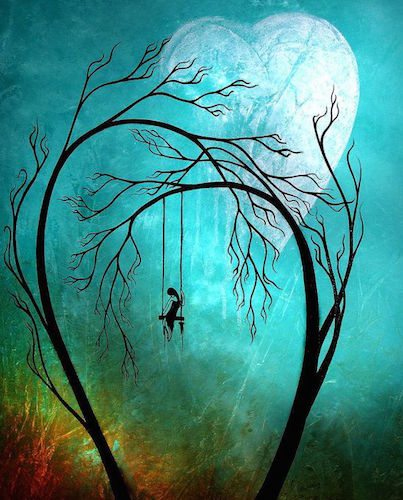What happens to our fragile interior sanctuary when sacred space is violated? Victims of abuse will confirm this: in some sense, they never recover. From the Latin root sacer, the word sacred connotes something that is set apart, consecrated or dedicated in service of the Holy. It is the most fundamental connection we experience as spiritual sojourners, this encounter with the Numinous. Many of us know when we have encountered the sacred or come to a sacred place or had a sacred encounter. Many of us have been taught to remove our shoes, to hush, to listen, to wait, to wonder, to adore. We know this as children when we enter a sacred space, encounter our first butterfly, snowflake or puppy’s tail, or when we first hold our baby sister or brother, or taste our first ripe strawberry. If we are taught to recognize and nurture the Holy as we encounter it, we carry our reverence for the sacred throughout life, even though our rituals and traditions mark sacred moments, encounters and places differently. We know sacred Presence when we encounter it.
We also know when the sacred is desecrated. When innocence is sullied, when trust is abused, when the dignity of persons is stripped away, when hallowed spaces are treated with disrespect and outright contempt, the sacred has been desecrated. The sanctuary has been violated. Whether the sacred inheres in a synagogue, mosque, or church, or whether it inheres in a forest glade, oceanic refuge, or a monarch roost, we know when it has been violated. We feel the devastation in our hearts.
Historian of religion and culture Diana Butler Bass recently reflected on the desecration of the U.S. Capitol on Jan. 6, in contrast to the funerary sanctity of the late Rep. John Lewis, who was eulogized in the House Rotunda five months earlier.
“Sacredness is far more than what is strictly religious. It exists outside the ordinary flow of our lives. The ‘aha’ moment, the sudden tears, the hush of reverence, the surprise of insight. Sacredness may occur anywhere. But, as human beings have always known, sacredness tends to break through repeatedly in some places. We mark some places as especially prone to it. Like the Capitol Rotunda. There are theological definitions of ‘sacred,’ and those are generally specific and narrow. And there are sociological ones, how we human beings construct and experience the sacred. The latter ones are fluid and open. Theologians like to manage the sacred; the rest of us just go about making the sacred as it comes.”
—Diana Butler Bass, “The Sadness of the Sacred: The Conflict of The Rotunda, Failed Theology, and the Renewal of Faith,” Jan. 11, 2021

As we recover from the collective trauma of the desecration of the communal sacred, we are coming to a new understanding of what it means to make sanctuary. What used to divide the sacred from the “secular” is no longer applicable, and the notion is indefensible in an age beyond the Anthropocene. “Everything is holy now,” as musician Peter Mayer sings. Philosopher of emerging consciousness and Prairiewoods Spirituality in the 21st Century 2019 co-facilitator Bayo Akomolafe speaks of the necessity of making sanctuary today:
“Spiritual companionship is no longer (or not exclusively) about a journey we must make, however spiritual we christen these particular journeys, not from here to there, not from this to that, not from less enlightened to more enlightened. If the sacred is spilled open, limning the ordinary with a restless tension, then our pilgrimage has no convenient beginning, no determinate destination, no confident plot, no findable landmarks. Confusion enters to disorient the orders we have assumed; the world has gone fugitive on us – and the ascension sites to our hoped-for divinity, the rapture sites where we all get personalized halos, and the altars where we worshipped, have been enfolded into the palimpsest of the land. We are collectively undone; the wall that divided us from the world at large is breached. Rupture in the stead of rapture. Now we must inhabit the cracks and ask how to make offerings to those cracks. Now we must seek out a wilder kinship with the alien insurgents that have joined us in the dyadic room of mentorship. A multitudinous space. We must now study with this brokenness to know how to feel, how to see, what to feel, what to imagine, what to ask. Sitting with this non-knowing is generative. We must go down to the underworlds where things are not proper, knowing spiritual companionship as a fugitive ‘Undercommons.’ We cannot afford refuge; we must make sanctuary.”
—Bayo Akomolafe, “Coming Down to Earth: Sanctuary as Spiritual Companionship in a Time of Hopelessness and Climate Chaos,” keynote for Spiritual Directors International, March 15, 2019
What might it mean to make sanctuary in the midst of 21st century chaos, when our desire for spiritual companions and spiritual insight is no longer constrained to our seeking out the sainted gurus and unapproachable Delphic oracles? What if our search for sanctuary is conducted among our fellow sojourners in the dynamic unfurling of the multiverse? What if our constant spiritual guides are the resounding choruses of cicadas and the deafening cries of orphans, the cavernous aches left by profound loss, and the hallowed bowls of “consecrated chicken soup?” (J.D. Salinger’s Franny and Zooey) The ordinary proclaims the Holy if we learn to listen properly; the profane births and enshrines the sacred if we seek it with beginner’s eye. The sacred finds homing in our broken hallelujahs and in the wild understory of mycelial networks and disturbing dreams. Might we pay attention anew? Sanctuary is made in the morning hours when our beloved yawns in the nape of our neck and a trembling infant suckles at the breast. Sanctuary is made at dusk, as the moon rises over the rain-soaked hillside and the bullfrogs begin their evening prayer, a soul-resonating chant no Cistercian choir could deny. Sanctuary is made in the middle of night when we awaken to the sounds of sirens and broken glass and recognize the holy is beckoning us to respond with heart-wrought supplication, inasmuch as we are all Samuels in the other room.
When our hearts are broken, when desecration of the sacred has bathed us in sadness, let us make sanctuary in the wilderness that surrounds us, in the wilderness that is within us. And here we will birth the Holy, the palpable sacred we are all midwifing in the sanctuary of our hearts. May it be so.
—Laura Weber, Prairiewoods associate director and retreats coordinator


